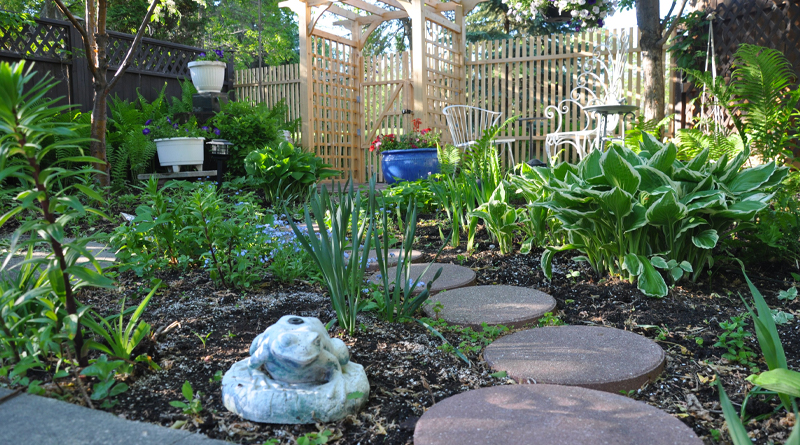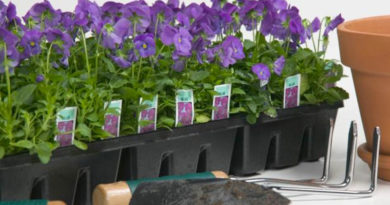Planning Your First Garden
To plant and maintain a flower border, with a good scheme for colour, is by no means the easy thing that is commonly supposed.
– Gertrude Jekyll
This past growing season I cut my gardening teeth caring for one flower bed with only three types of plants. (Only the dahlia’s did well, which may be my puppy’s fault; she bit off the poppy heads and sat on the nasturtiums.) The demands of moving to our new house and renovating was partly why I started out so small, but inexperience was also a factor. A lush, colour-filled flower bed is something that even experienced gardeners struggle each year to achieve and building a beautiful garden takes years. I wasn’t ready for that. Now as I stare out at the huge empty space that is my backyard, ready to sketch out a garden design, I am trying to figure out where to make my start planning the garden.
Flipping through gardening magazines, seed catalogues and plant guides are a necessary rite of passage for the inexperienced gardener. Sorting through all those sigh-inducing garden photos helps you discover what colour schemes you like, what foliage you find interesting and whether you like manicured or messy. A great idea while planning your garden is to rip out the pictures of gardens that move you and keep them in a garden journal. After a while, compare them to see what they have in common, and there lies your garden style.
Looking at other gardens is an invaluable exercise. When I find a bed, colour scheme or garden I like, I stare at it until I can pinpoint the little details that make it work. The best rule for planning a good garden is to become a little obsessed.
If you can decide on a specific garden style, then you will have found a starting point. What to plant, how to organize the layout and what type of materials to use in hardscaping becomes a little clearer. It is by no means necessary to know the style of garden you want, but it can help you make more confident decisions and create a coherent design.
When choosing a colour scheme, check your garden photo clippings to see what colour is prominent in your favourite gardens. If eight out of 10 employed yellow, plan to use a lot of it. With one preferred colour, your garden will have constancy. Complementary shades and foliage can be chosen against that main colour. Later, as your eye wanders over your completed bed, it will be anchored by the colour you have sprinkled throughout. This will also help dictate the garden’s mood.
Keep in mind that most colour schemes will benefit from the addition of a little white to add punch and make your favourite colours stand out a bit more. Also, consider your house and the surrounding structures. If you work at complementing the style of your house, (think twice about putting red flowers against an orange house) you will contribute to the natural feel and look of your outdoor space.
In designing a garden, remember that foliage is a key component. One of the pieces of wisdom I gleaned in my first months of gardening was that foliage is essential to creating a lush garden. If you pick your plants for foliage, then even non-blooming moments
of the season will look great and your beds will look full and well planned. Consider the shape, texture and especially the colour of the leaves of your plants as you prepare your design.
Another important thing to know is that a garden needs structure, so be sure to give trees and shrubs a leading role. Evergreens and deciduous woody plants, shrubs and trees, ornamental and shade trees should be selected with care. Investing your time and money in these features will bring year round interest and make it look less like a novice’s and more like a master gardener’s.
When you keep these thoughts in mind you will have the beginnings of a garden that works, and a new confidence about what you can achieve.






